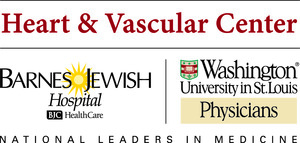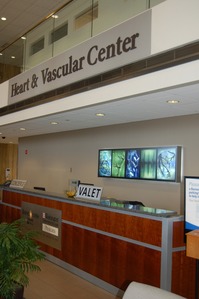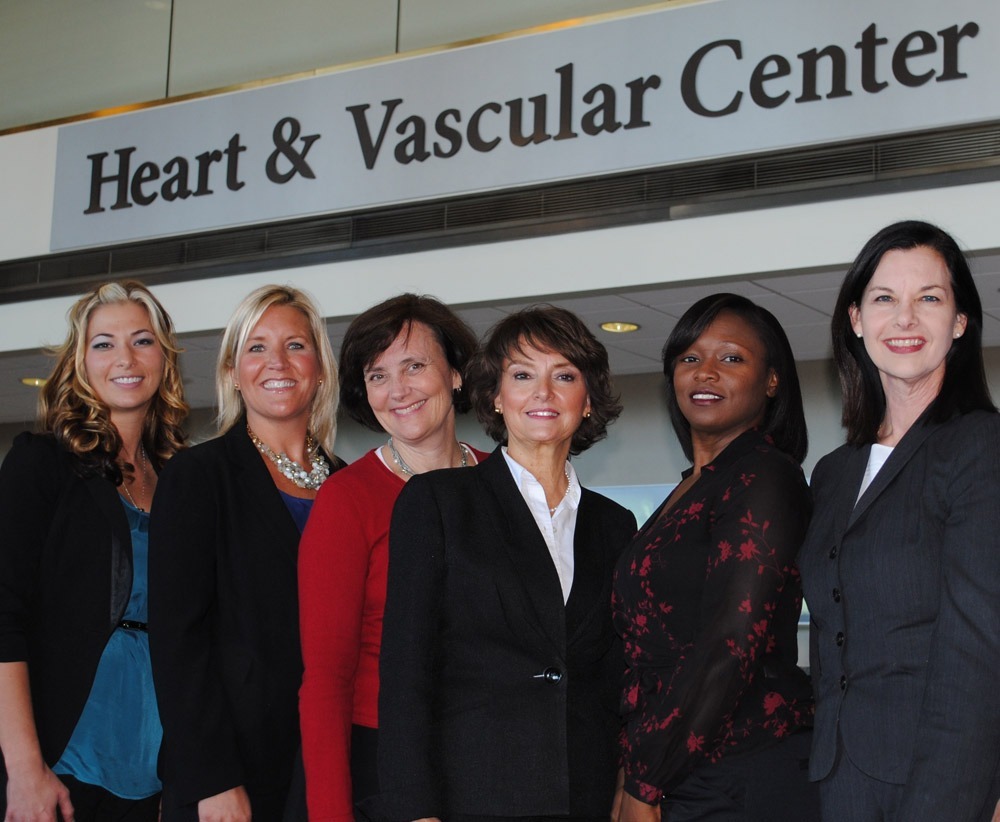Special Treatment, Please: Barnes-Jewish Hospital’s Welcoming Approach Makes Patients Feel at Home
// By Lisa D. Ellis //
 Today, the patient comes first in many health care facilities. This is thanks to developments brought about by health care reform that put an increased emphasis on stronger teamwork between clinical staff and health care consumers to ensure high-quality, value-focused care and patient satisfaction.
Today, the patient comes first in many health care facilities. This is thanks to developments brought about by health care reform that put an increased emphasis on stronger teamwork between clinical staff and health care consumers to ensure high-quality, value-focused care and patient satisfaction.
But how organizations are putting this concept into action can vary a great deal.
At Barnes-Jewish Hospital and Washington University School of Medicine in St. Louis, Missouri, several customer-oriented programs are deeply integrated into the facility’s framework to help people feel truly comfortable with the care they receive. Such customer-focused programs include (among many others) concierge services through the Washington University and Barnes-Jewish Heart & Vascular Center, and culturally sensitive initiatives for women offered through its inpatient care and ambulatory screening programs.
In this first of a two-part series, we take an in-depth look at the concierge services, which strive to make a large university-affiliated hospital feel more comfortable and homey for patients and family.
Concierge Services in the Heart & Vascular Center
 Barnes-Jewish Hospital at Washington University Medical Center is the largest hospital in Missouri. Barnes-Jewish Hospital is a 1,315-bed teaching hospital affiliated with Washington University School of Medicine in St. Louis. The hospital has a 1,763-member medical staff, with many recognized as “Best Doctors in America.” Barnes-Jewish is a member of BJC HealthCare, which provides a full range of health care services through its 12 hospitals and more than 100 health care sites in Missouri and Illinois. Its service area includes a radius of approximately 250 to 300 miles surrounding St. Louis, which means that some patients must travel several hours or even longer to access the hospital’s services, including those through the Heart & Vascular Center, which opened its doors about six years ago.
Barnes-Jewish Hospital at Washington University Medical Center is the largest hospital in Missouri. Barnes-Jewish Hospital is a 1,315-bed teaching hospital affiliated with Washington University School of Medicine in St. Louis. The hospital has a 1,763-member medical staff, with many recognized as “Best Doctors in America.” Barnes-Jewish is a member of BJC HealthCare, which provides a full range of health care services through its 12 hospitals and more than 100 health care sites in Missouri and Illinois. Its service area includes a radius of approximately 250 to 300 miles surrounding St. Louis, which means that some patients must travel several hours or even longer to access the hospital’s services, including those through the Heart & Vascular Center, which opened its doors about six years ago.
To make patients and their families feel more comfortable in the clinical setting and to reduce their stress levels in the health care setting, the Heart & Vascular Center’s designated concierge program was created five years ago and has since become an expected level of care for all who come to the center.
Unlike the more extravagant level of service offerings provided at some well-known health centers around the country that are tailored specifically for VIPs such as high-ranking executives, politicians, and celebrities, the Heart & Vascular Center makes its special treatments accessible for the general population, so everyone can access these features.
Creating a Personalized Experience

Washington University and Barnes-Jewish Heart & Vascular Center’s main entrance is a newly designed lobby located on the first floor Queeny Tower on the Barnes-Jewish Hospital south campus.
In fact, a stay at the Heart & Vascular Center, which contains 260 inpatient beds and is in a tower of the main building, begins with a “warm welcome” from someone who greets new patients at the entrance and escorts them to their destination, says Patti Crimmins Reda, Executive Director of the Washington University and Barnes-Jewish Heart & Vascular Center.
If this sounds more like a resort than a hospital, that’s the idea, she says, since a visit to a cardiovascular unit can be a stressful event, and the staff tries to help people feel more at ease.
The concierge team consists of three dedicated concierge representatives, two dedicated Advanced Practice Registered Nurses (APRN), and one office coordinator to keep things flowing smoothly. The patient care representatives round on the rooms twice a day and offer reading materials, electronics such as iPads, laptops, and DVD players and movies on DVD, along with adult coloring books, extra blankets, and anything else to help pass the time in the most comfortable way. In addition, the staff helps family members arrange lodging nearby and can also provide them with access to a shower and even laundry facilities on-site if needed.
Further, if patients are lonely or seem to be struggling emotionally, the concierge will work with the clinical staff to make sure all of the patient’s needs are met.

The concierge services at Washington University and Barnes-Jewish Heart & Vascular Center is complimentary and provides patients with resources, including lodging, restaurants, directions and transportation services.
Room Logistics
Since Barnes-Jewish Hospital is an older facility (now in the midst of an extensive multi-year modernization/rebuild project), it currently has semiprivate rooms instead of private ones, and this makes the concierge service especially valuable to make sure patients have an appropriate roommate match and to head off any potential conflicts with styles or needs.
For people who do want a private room, the hospital offers the option to pay extra for this comfort. This cost is not covered by most insurance policies, but some patients feel the expense can be worth it. But with only a limited number of private rooms in the facility, if they are all in use for clinical purposes (such as a patient with an infectious disease who needs to be isolated), then patients may not be able to access one. In this case, the concierge staff will help to ensure they feel comfortable in whatever room they are placed.
The concierge representatives continue to work with the patient and family upon discharge to help them understand the follow-up steps, and provide clarification on the directions. There is also a phone number patients or their families can call once they are back at home to ask any questions that arise and make sure they are following the treatment protocol properly.
Meeting the Needs of VIPs
The concierge program strives to make every patient feel special and well cared for. For patients who are high-level executives, politicians, or movie stars and are used to being treated as VIPs, the program does not cater to them any differently than to other patients; but there is one caveat.
“We can’t replicate a VIP’s personal staff,” Crimmins Reda points out, “but when we have a celebrity or other important figure on-site, we do try to make room for their own staff and allow the staff to do their jobs to wait on the patient and provide the level of service he or she is used to receiving.”
Therefore, VIP patients’ personal staff members are accommodated wherever possible and also are made a part of the treatment team, provided they follow HIPAA guidelines.
Fitting into the Broader Care Framework
“Our concierge program is an essential component of the entire process of care we deliver” for people with a wide range of needs and desires, says Crimmins Reda. She adds that similar concierge-level programs are also offered in other units at Barnes-Jewish Hospital.
While such personalized services seem to strike a welcome chord with patients and families, Crimmins Reda says the hospital does not do any formal marketing of these offerings. “As a tertiary care center, most patients come from referrals through their physicians, so we focus our attention on making sure the medical community knows what services we have so the doctors can share this information with their patients,” she says.
In the early stage of the concierge program, she says there was a formal brochure the hospital also shared with clinicians to promote the special offerings so patients would know what to expect before they came to the facility. The center had also created a video tour of the program so doctors could share it with patients right in their own office and let them know what to expect in advance.
“We don’t really need to do this anymore, though, since the concierge services are such a strong part of the overall process now. Today, they are really an integral part of our care culture,” Crimmins Reda says.
Creating a Homey Culture
“We are a big urban center and we know people can be afraid of such a large facility,” Crimmins Reda says. The reality is that for people living in more rural communities or who travel far to access services, the urban hospital setting can be a far cry from a smaller, local hospital and some patients may find the change scary or overwhelming. This is where the concierge services can provide an extra level of reassurance. “We have tried to combine the concept of navigating our facility with the concierge services” so patients can move smoothly and confidently through the hospital setting,” Crimmins Reda says. “Making such personalized touches part of the normal treatment day helps make the hospital feel much more homelike.”
A Successful Approach
The results of the concierge approach seem to be paying off. “We are very pleased with our patient satisfaction results,” Crimmins Reda says. “We are above the HCAHPS [Hospital Consumer Assessment of Healthcare Providers and Systems] standards,” she points out. The hospital also does its own internal patient satisfaction evaluation, and the Heart & Vascular Center always gets very high marks. “We are always in the top 10 percent thanks to our personalized care model. Therefore, if patient satisfaction scores are considered a measurement of success, then I think we have been successful,” she says.
Lisa D. Ellis is Editor of Strategy Health Care Marketing.
